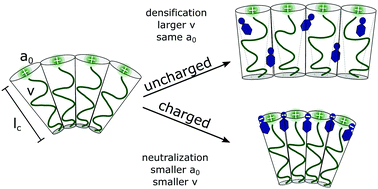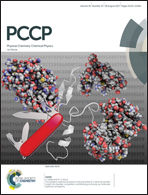Ionic micelles and aromatic additives: a closer look at the molecular packing parameter
Abstract
Wormlike micellar aggregates formed from the mixture of ionic surfactants with aromatic additives result in solutions with impressive viscoelastic properties. These properties are of high interest for numerous industrial applications and are often used as model systems for soft matter physics. However, robust and simple models for tailoring the viscoelastic response of the solution based on the molecular structure of the employed additive are required to fully exploit the potential of these systems. We address this shortcoming with a modified packing parameter based model, considering the additive–surfactant pair. The role of charge neutralization on anisotropic micellar growth was investigated with derivatives of sodium salicylate. The impact of the additives on the morphology of the micellar aggregates is explained from the molecular level to the macroscopic viscoelasticity. Changes in the micelle's volume, headgroup area and additive structure are explored to redefine the packing parameter. Uncharged additives penetrated deeper into the hydrophobic region of the micelle, whilst charged additives remained trapped in the polar region, as revealed by a combination of 1H-NMR, SAXS and rheological measurements. A deeper penetration of the additives densified the hydrophobic core of the micelle and induced anisotropic growth by increasing the effective volume of the additive–surfactant pair. This phenomenon largely influenced the viscosity of the solutions. Partially penetrating additives reduced the electrostatic repulsions between surfactant headgroups and neighboring micelles. The resulting increased network density governed the elasticity of the solutions. Considering a packing parameter composed of the additive–surfactant pair proved to be a facile means of engineering the viscoelastic response of surfactant solutions. The self-assembly of the wormlike micellar aggregates could be tailored to desired morphologies resulting in a specific and predictable rheological response.



 Please wait while we load your content...
Please wait while we load your content...